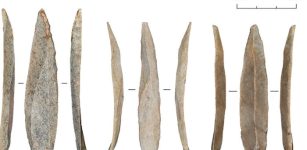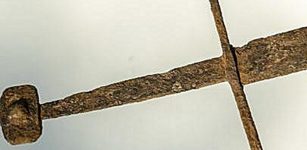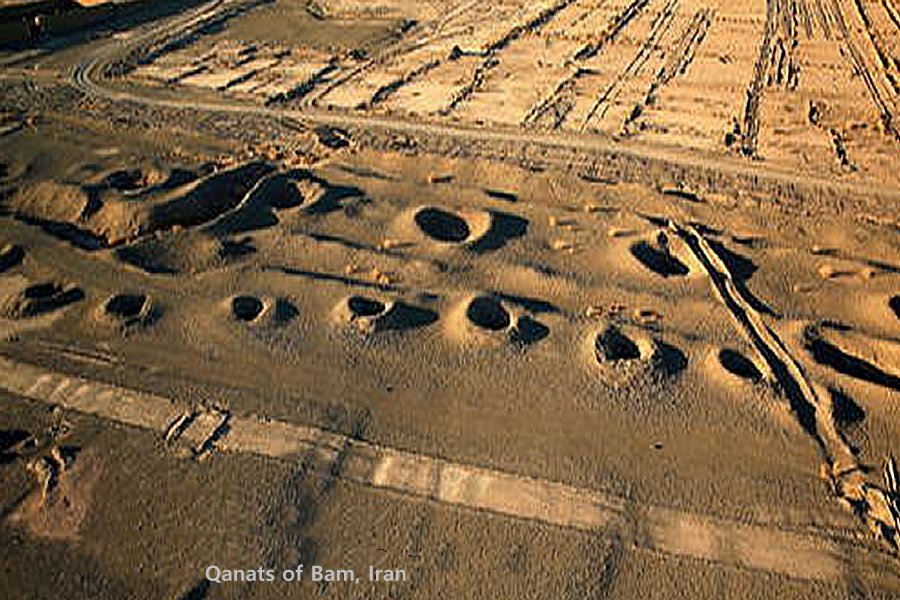Qanats: Ancient 3,000-Year-Old Underground Irrigation Canals Invented By People Of Persia
A. Sutherland - AncientPages.com - One of the ancient times' most amazing technologies is underground irrigation canals known as "qanats."
The qanats transported water from water wells to the surface for irrigation and drinking, and they could do it over long distances.
The technology- dated back more than 3000 years - was developed in ancient Persia. In the early part of the first millennium BC, Persians began to construct complex tunnel systems called 'qanats' for extracting groundwater in the dry mountain basins of present-day Iran. Later, the qanats gradually spread, and many of them are continuously in use stretching from China on the east to Morocco on the west, and even to both American continents. In fact, about 20,000 other qanats are still in use.
Qanat tunnels - often several kilometers long - were hand-dug, and their size was just large enough to fit the person doing the digging. Qanat builders sank vertical shafts along the tunnel at intervals of 20 to 30 meters. This space was needed to remove excavated material and to provide ventilation and access for future repairs.
The ancient Persian qanat water delivery system proved to have many apparent advantages. For example, it limited water loss from seepage and evaporation, and no pumps were necessary because the qanat system could function based entirely on gravity.
One of the longest known qanats in the world that is 70 km long is located in Iran. The qanat in the city of Gonabad ("Qanats of Gonabad"), which is the oldest and largest, is part of the Unesco World Heritage List since 2007. Built between 700 and 500 BC by the Achaemenid Empire in what is now Gonabad, Razavi Khorasan Province, Iran, the complex contains 427 water wells with a total length of 33,113 meters (20.575 mi).
Today, Gonabad's qanat provides water to more than 40,000 people.
With the conquests of the Persians, the qanats expanded from Egypt to Bactria (in modern times, certain parts of Tajikistan, northern Afghanistan, and southern Uzbekistan.
Many others can be found in the north of Africa, in the Middle East, China India, as well as in Sicily, in the southern parts of Spain and in the Canaries.
With this ancient technology, the Persians could build a set of vertical wells. It was important to dig them on a hill to reach a source of underground water. Then, the secondary wells connected the tunnel with the surface and finally, irrigation channels carried the water to respective areas.
The qanats significantly contributed to the prosperity and good life of the Persian people in regions exposed to bad weather conditions.
The vertical wells allowed access and help to ventilate the entire system. The wells are connected to a drainage gallery that is somewhat inclined, which helps water to descend in the form of waterfalls.
The qanats still create a reliable supply of water for human settlements and irrigation in hot, arid, and semi-arid climates.
Written by – A. Sutherland AncientPages.com Staff Writer
Updated on November 5, 2022
Copyright © AncientPages.com All rights reserved. This material may not be published, broadcast, rewritten or redistributed in whole or part without the express written permission of AncientPages.com
More From Ancient Pages
-
 Terrifying Buggane: Demonic And Tyrannical Celtic Demon That Hated Churches And Set Them On Fire
Celtic Mythology | Jul 14, 2017
Terrifying Buggane: Demonic And Tyrannical Celtic Demon That Hated Churches And Set Them On Fire
Celtic Mythology | Jul 14, 2017 -
 Vast Network Of Previously Unknown European Bronze Age Megastructures Discovered
Archaeology | Nov 20, 2023
Vast Network Of Previously Unknown European Bronze Age Megastructures Discovered
Archaeology | Nov 20, 2023 -
 DNA Analyses Suggest The Plague Contributed To Stone Age Farmers’ Decline
Archaeology | Jul 10, 2024
DNA Analyses Suggest The Plague Contributed To Stone Age Farmers’ Decline
Archaeology | Jul 10, 2024 -
 On This Day In History: Richard The Lionheart Arrives To The Holy Land – On June 8, 1191
News | Jun 8, 2016
On This Day In History: Richard The Lionheart Arrives To The Holy Land – On June 8, 1191
News | Jun 8, 2016 -
 Smyrna Excavations Reveal Ashes From Santorini’s Minoan Volcanic Eruption
News | Jun 8, 2018
Smyrna Excavations Reveal Ashes From Santorini’s Minoan Volcanic Eruption
News | Jun 8, 2018 -
 The Bayeux Tapestry: One Of The Great Historical Records Of The Middle Ages
Artifacts | Feb 29, 2016
The Bayeux Tapestry: One Of The Great Historical Records Of The Middle Ages
Artifacts | Feb 29, 2016 -
 Mass Production Of Stone Bladelets Led To A Cultural Shift In Paleolithic Levant
Archaeology | Jan 7, 2023
Mass Production Of Stone Bladelets Led To A Cultural Shift In Paleolithic Levant
Archaeology | Jan 7, 2023 -
 Radiocarbon Dating Sheds Light On Historical Events In The Ancient City Of Gezer
Archaeology | Nov 15, 2023
Radiocarbon Dating Sheds Light On Historical Events In The Ancient City Of Gezer
Archaeology | Nov 15, 2023 -
 Gravitational Waves Shed Light On The Mysterious Antikythera Mechanism
News | Jun 29, 2024
Gravitational Waves Shed Light On The Mysterious Antikythera Mechanism
News | Jun 29, 2024 -
 Once Impressive Temple Of Hadrian In City Of Cyzicus Will Be Restored Soon
Archaeology | Sep 7, 2020
Once Impressive Temple Of Hadrian In City Of Cyzicus Will Be Restored Soon
Archaeology | Sep 7, 2020 -
 8,000 Year-Old Human Skeleton Discovered By Cave Divers Near Tulum, Mexico
Archaeology | Sep 15, 2022
8,000 Year-Old Human Skeleton Discovered By Cave Divers Near Tulum, Mexico
Archaeology | Sep 15, 2022 -
 Fossilized Skulls Reveal Relatives Of Today’s Rhinos Had No Horn And Died Out 5 Million Years Ago
Fossils | Nov 2, 2023
Fossilized Skulls Reveal Relatives Of Today’s Rhinos Had No Horn And Died Out 5 Million Years Ago
Fossils | Nov 2, 2023 -
 Hnefatafl: Ancient Viking Board Game “King’s Table” Popular In Medieval Scandinavia
Ancient History Facts | Mar 20, 2016
Hnefatafl: Ancient Viking Board Game “King’s Table” Popular In Medieval Scandinavia
Ancient History Facts | Mar 20, 2016 -
 66 Diorite Statues Of Lion-Headed Goddess Sekhmet Discovered In Luxor, Egypt
Archaeology | Mar 9, 2017
66 Diorite Statues Of Lion-Headed Goddess Sekhmet Discovered In Luxor, Egypt
Archaeology | Mar 9, 2017 -
 Crimean Atlantis: Remarkable Ancient Underwater City Of Akra
Featured Stories | Mar 6, 2017
Crimean Atlantis: Remarkable Ancient Underwater City Of Akra
Featured Stories | Mar 6, 2017 -
 World’s Oldest Shoes: Some Look Surprisingly Modern
Artifacts | Jun 22, 2023
World’s Oldest Shoes: Some Look Surprisingly Modern
Artifacts | Jun 22, 2023 -
 Queen Mama Ocllo: Legendary Wife Of Sapa Inca Manco Capac In Beliefs Of Andean People
Featured Stories | May 6, 2020
Queen Mama Ocllo: Legendary Wife Of Sapa Inca Manco Capac In Beliefs Of Andean People
Featured Stories | May 6, 2020 -
 Rare 2,500-Year-Old Saw Discovered At The Ancient Hittite City Hattusa
Archaeology | Nov 27, 2023
Rare 2,500-Year-Old Saw Discovered At The Ancient Hittite City Hattusa
Archaeology | Nov 27, 2023 -
 Medieval Well-Preserved Sword Discovered In A Peat Bog In Poland
Archaeology | Jun 21, 2017
Medieval Well-Preserved Sword Discovered In A Peat Bog In Poland
Archaeology | Jun 21, 2017 -
 On This Day In History: Sunspot Observed By Chinese Astronomers During The Han Dynasty – On May 10, 28 BC
News | May 10, 2016
On This Day In History: Sunspot Observed By Chinese Astronomers During The Han Dynasty – On May 10, 28 BC
News | May 10, 2016



